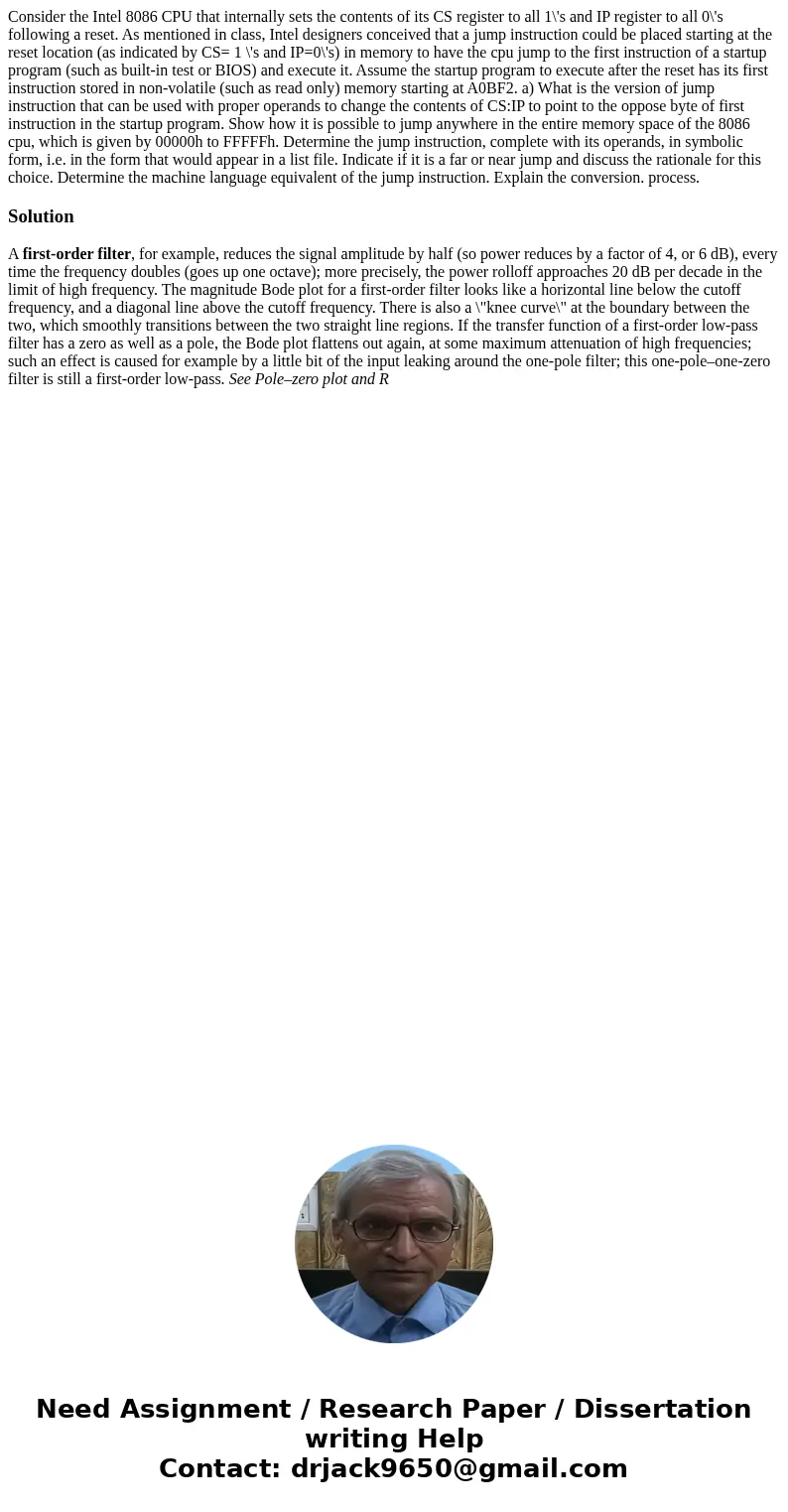Consider the Intel 8086 CPU that internally sets the contents of its CS register to all 1\'s and IP register to all 0\'s following a reset. As mentioned in class, Intel designers conceived that a jump instruction could be placed starting at the reset location (as indicated by CS= 1 \'s and IP=0\'s) in memory to have the cpu jump to the first instruction of a startup program (such as built-in test or BIOS) and execute it. Assume the startup program to execute after the reset has its first instruction stored in non-volatile (such as read only) memory starting at A0BF2. a) What is the version of jump instruction that can be used with proper operands to change the contents of CS:IP to point to the oppose byte of first instruction in the startup program. Show how it is possible to jump anywhere in the entire memory space of the 8086 cpu, which is given by 00000h to FFFFFh. Determine the jump instruction, complete with its operands, in symbolic form, i.e. in the form that would appear in a list file. Indicate if it is a far or near jump and discuss the rationale for this choice. Determine the machine language equivalent of the jump instruction. Explain the conversion. process.
A first-order filter, for example, reduces the signal amplitude by half (so power reduces by a factor of 4, or 6 dB), every time the frequency doubles (goes up one octave); more precisely, the power rolloff approaches 20 dB per decade in the limit of high frequency. The magnitude Bode plot for a first-order filter looks like a horizontal line below the cutoff frequency, and a diagonal line above the cutoff frequency. There is also a \"knee curve\" at the boundary between the two, which smoothly transitions between the two straight line regions. If the transfer function of a first-order low-pass filter has a zero as well as a pole, the Bode plot flattens out again, at some maximum attenuation of high frequencies; such an effect is caused for example by a little bit of the input leaking around the one-pole filter; this one-pole–one-zero filter is still a first-order low-pass. See Pole–zero plot and R

 Homework Sourse
Homework Sourse